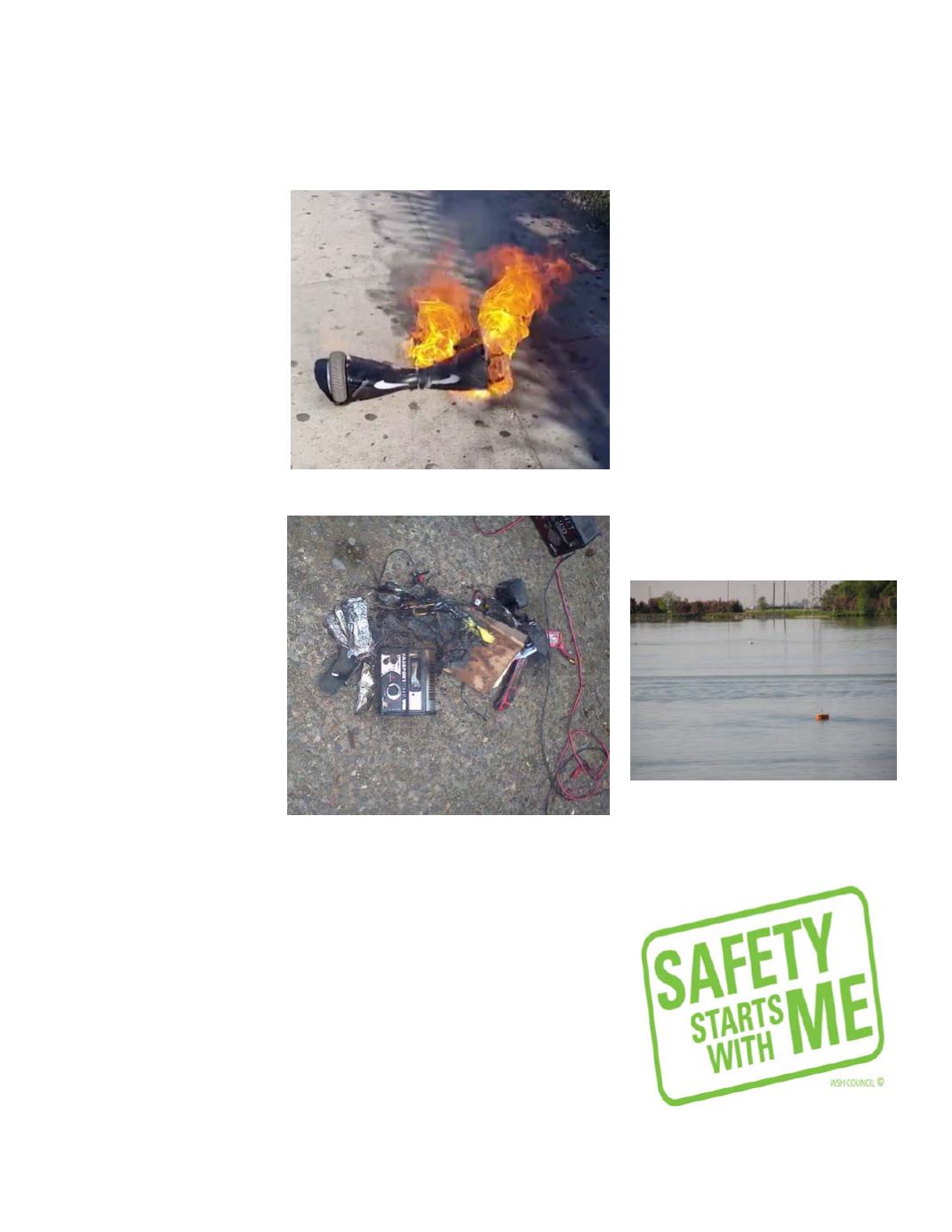
is the solution. Fill the container with
water or put the battery in the pond until
the battery is cold. In any case get all
flammable material away from the fire.
The vapor and smoke from any burning
plastic is toxic. Don’t breathe the fumes.
If the fire occurs inside a building get to
fresh air immediately.
Now that NAMBA is certifying
approved boating sites, I have been
asked how to isolate areas where there is
public access to the water. See the
October 2014 Propwash for a discussion
of safety netting. In 2015 the NAMBA
Nationals were held at Lake Minden,
California in District Nine where the
netting system was used. Look at this net
and think how it might work on your
pond. If your pond has a low shore, a
simple net along the shore will protect
spectators in popular parks. Orange
construction netting is not as enough.
PROPWASH
April 2016
15
Safety Spring Corner
By Lohring Miller
NAMBA Safety Chairman
With pictures of burning
hoverboards in the news, it’s time
to revisit lithium polymer battery
safety.
Below and to the right is a
similar incident that happened with
unsupervised charging of model
batteries. Fortunately the fire was
detected in time and the damage
was confined to the pictured items.
High quality lithium polymer
batteries can be safe when treated
carefully. However precautions
need to be taken, especially when
charging. Always supervise the
charging process and keep the
batteries away from any
flammable materials. A lipo sack
is also a good idea, but the
charging process should still be
monitored. A charger designed for
lipos should be used and the
balancing lead must be connected.
Follow the manufacturer’s charge
current recommendations, but
anything over the batteries’ current
rating (mah) should be supervised
carefully. Higher charge rates are
possible, especially with the best
packs, but magnify battery
problems.
Your speed control should have
a low voltage cut off. Typically
that point is 2.8 volts per cell times
the number of cells. However, a
bad cell can still overheat when
the other cells maintain the battery
voltage above the cutoff voltage.
The more cells a battery has, the more likely this becomes. Many of the fires at
competition events have been in high voltage (over 4S) batteries. A charger that shows
the individual cell voltages during charging will reveal a problem cell. A long time for
the pack to balance at the end of charging is also a clue to a bad cell. There is no
substitute for care and knowing your battery packs.
Too high a current draw and over discharging can also cause heating that leads to a
fire. Be careful when testing a boat for the first time. Use a small propeller and check
the battery temperature after running. A data logger that records current is very helpful
if you are trying to get the last bit of performance, but battery temperature is the
important measurement. Temperatures over 140 degrees are a warning to monitor the
battery for continuing heat buildup after a run. Normally your batteries shouldn’t get
much hotter than 120 degrees.
If a battery is hot and/or puffed after a run, it should be placed in a safe area and
watched. A metal bucket filled with sand is an example. If a fire starts, don’t panic.
This is not some exotic metal fire. Most of what is burning is plastic wrapping and
ethylene or polypropylene from the electrolyte. Cooling the battery with lots of water
The burning topic during the holidays was the
exploding of hoverboard lipo batteries
Aftermath of a Lipo Charging Fire
The elevated floating net at Lake
Minden in District 9 at the 2015 NAMBA
Nationals was very effective the few
times that it was needed


